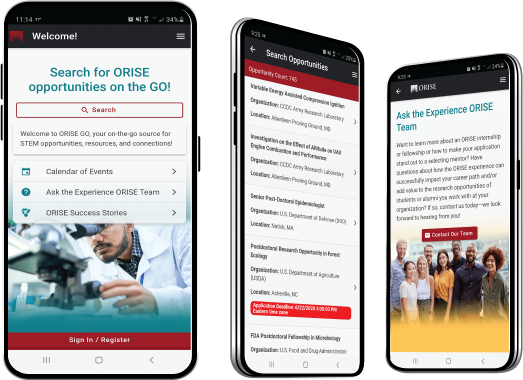U.S. DOE Fusion Energy Sciences Postdoctoral Research Program
Application Deadline: January 31, 2019 4:00 PM EDT
Letters of Recommendation Deadline: February 15, 2019 4:00 PM EDT
- Application– include responses to questions specific to the FES program, proposed hosting facility, proposed research plan, and an additional plan for the International Travel Supplement (optional). You must identify a hosting facility and potential mentor currently conducting or directing research in an area related to FES. See FES website for a list of facilities that have hosted past FES Fellows and may host new fellows. You may propose other facilities including those supported by private industry.
- Résumé or Curriculum Vitae (CV)– including academic history, employment history, relevant experiences & publications.
- Transcripts– may be unofficial transcripts issued to the student.
- Letters of Support & References– one letter of support from the proposed mentor(s), one letter of support from a faculty member/research scientist of the proposed hosting facility, one reference form and letter of recommendation from your thesis or dissertation advisor, and one reference form and letter of recommendation from another colleague of the applicant.
International Travel Supplement (Optional): See Description Section for details.
- Documents sent by email, postal mail, or fax will not be considered.
- Supporting materials must be uploaded as PDF files so the document can be searched by Zintellect’s search engine. Scanned items are not optimal for search engines. PDF must not require special certificates or passwords to open. Max file size is 10MB.
- All documents must be in English or include an official English translation.
Please send questions to Fusion@orau.org.
The Fusion Energy Sciences (FES) Postdoctoral Research Program offers recent doctoral degree recipients the opportunity to conduct research supporting the mission of the U.S. Department of Energy’s (DOE), Office of Science, Fusion Energy Sciences research and development programs. Participants acquire experience and training in areas related to fusion energy and basic plasma science, interact with outstanding scientists and engineers, and have access to advanced equipment and facilities.
For more information about DOE Fusion Energy Sciences (FES): http://science.energy.gov/fes/
Participant Benefits
Participants receive an annual stipend of $67,000 plus limited reimbursement for health insurance costs. The program will provide a one-time $5,000 relocation allowance, if applicable. The program will support one trip per year to an FES-related conference or to another federal research facility. Appointments are for up to two years. The initial appointment period for is one year. Extension of the appointment for a second year will be subject to satisfactory progress toward completion of the project assignments, and availability of funds.
Nature of the Appointment
Participants will not enter into an employee/employer relationship with ORISE, ORAU, the DOE, or any other office or agency. Instead, the participant will be affiliated with ORISE for the administration of the appointment through the ORISE Appointment Letter and Terms of Appointment.
International Travel Supplement (optional)
A research proposal that might potentially involve substantial international collaboration may request special supplemental travel funds to support costs associated with foreign travel. In addition to the same stipend and stipend supplements awarded to FES postdoctoral researchers, the International Travel Supplement is to support foreign travel costs, and qualified costs associated with extended visits at a foreign institution. In addition to the standard conditions for the base FES postdoctoral researcher award, the following should be met:
- Applicants must have two project mentors: one from an institution in the United States and one from an institution abroad.
- The proposed research is specifically focused on the applicant developing a unique scientific competency or expertise.
- For experimental research proposals:
- The applicant plans to spend a significant fraction of their appointment at a foreign facility in order to participate in various stages of an experimental campaign including but not limited to planning, preparation, execution, and data analysis.
- The proposal involves a collaborative research effort utilizing experimental data from both the foreign facility and either (i) experimental data from at least one facility located in the United States, and/or (ii) ongoing theory/simulation efforts by researchers in the United States.
- For theoretical or computational research proposals:
- The applicant plans to spend a significant fraction of their appointment at a foreign institution in order to work closely with the proposed foreign mentor.
- The proposal contains a collaborative research effort involving fundamental theory and/or theoretical models developed abroad and either (i) ongoing theory/simulation efforts by researchers in the United States, and/or (ii) ongoing analysis of experimental data from fusion facilities in the United States.
Applicants who wish to be considered for International Travel Supplement should complete the special sections of the application, including a proposed two-year travel plan, schedule, and budget. The incremental research enabled by the International Travel Supplement should be described in a separate, dedicated section of the research plan so that the base research plan may still be selected even if the funds for a International Travel Supplement are not provided.
For additional information about the Fusion Energy Sciences (FES) Postdoctoral Research Program, please visit: http://www.orau.gov/doe-fes-postdoc/
An applicant must have received a doctoral degree in an appropriate science or engineering discipline within four years of the desired starting date or expect to complete all requirements for such a degree prior to the desired starting date.
U.S. citizenship or lawful permanent resident status is also required.
The selection of participants is based on academic records; letters of recommendations; science and engineering background; interests and professional goals; statement of research to be performed; compatibility of research interests with the sponsor’s research programs and resources; and availability of funds, staff, programs, and equipment. Preference is given to applicants who request a research facility other than the one where the doctoral degree was obtained.
Preferred skills - Participants should have skills and/or experience in topics addressed by this program:
- Experimental Plasma Physics
- Theoretical Plasma Physics
- Computational Plasma Physics
- Plasma-Material Interfacial Science
- Fusion Materials Science
- Plasma Control Science
- Advanced Diagnostics
Research supported in this program must be directed toward addressing problems at the forefront of plasma science, specifically in the below areas. See the FES website for additional information.
Transients
A main goal of tokamak research is to use magnetic plasma confinement to develop the means of operating high-pressure fusion plasmas near stability and controllability boundaries while avoiding the occurrence of transient events that can degrade performance or terminate the plasma discharge. Various events can lead to the sudden release of thermal and magnetic stored energy to plasma facing components, potentially damaging device components. Two events of particular concern are edge localized modes (ELMs) and disruptions. ELMs may drive repetitive (approximately 1 Hz) pulses of up to 10 percent or more of the plasma stored energy to the walls in ITER while disruptions may completely terminate the discharge, releasing all of the plasma’s thermal and magnetic energy into nearby structures and potentially producing a runaway electron population that may cause localized damage. Present estimates indicate that sustained fusion performance in ITER and later reactors will require large reductions in the magnitude and frequency of both ELMs and major disruptions. A great deal of progress has been made in avoiding and mitigating the impact of transients and the United States is a world leader in addressing the challenges, particularly in identifying innovative control solutions and in understanding the relevant physic mechanisms to support extrapolation of these solutions to reactor-scale tokamaks.
Plasma-Materials Interactions
The pronounced science challenges associated with plasma-materials interactions (PMI) in confined fusion devices are enormous. These challenges include physical phenomena that occur over a vast range of length and time scales, and involve processes from, and interactions between, plasma edge physics and material science. New PMI solutions are required for practical heat and particle exhaust in future plasma systems as these considerations limit the operating space and drive the overall size and cost of net-energy producing fusion systems. Over the past decade, a number of both domestic and international strategic planning activities have highlighted PMI as a major knowledge gap and recommend that it be a priority for fusion research towards ITER and conceptual prototype reactors. Therefore, PMI research offers opportunities to advance the science of both plasma and materials, and the potential for new discoveries arising from their interactions.
Integrated Simulations for Magnetic Fusion Energy Sciences
The high cost of building future experiments and prototype fusion facilities, such as the ITER device, combined with the complexity of these systems and the advances expected in extreme-scale computing over the coming decade provide strong motivation for developing integrated simulation capabilities. Such tools aim to predict the key physical processes in these devices thus minimizing risk to the device and guaranteeing its successful operation. Two key components of this simulation effort involve (1) disruption prediction, avoidance, and mitigation (“disruption physics”), and (2) plasma pedestal and scrape-off layer physics (“plasma boundary physics”). Simulations in these areas are an integral part of research in the Transients and Plasma-Materials Interface areas.
In the disruption physics area, integrated simulation of all stages and forms of tokamak disruptions, with and without mitigation, are needed, and will require improving multiscale, multi-physics algorithms, managing large amounts of computational data, and taking advantage of new extreme-scale computing opportunities. Linear and nonlinear computational models must be validated in order to establish confidence in the prediction and understanding of tokamak disruption physics with and without mitigation.
In plasma boundary physics, models require integration of multiple physical processes that cover a wide range of overlapping spatial and temporal scales, from the hot, confined pedestal zone with sharp gradients, to the cooler unconfined edge and divertor plasma, and finally to the first few microns of the wall itself. As demonstrated in the recent past, these simulations will continue to benefit from expertise in applied mathematics, computer science, and high-performance computing. Required capabilities include kinetic turbulence simulations, related three-dimensional fluid simulations with gyro-Landau kinetic extensions, large-scale molecular dynamics simulations of materials, and couplings of lower-dimensional models (for fast analyses) to simulate interactions between zones and particle species.
Plasma Science Frontiers
The Frontiers of Plasma Science involve research in largely unexplored areas of plasma physics, with a combination of theory, computer modeling, and experimentation. The plasma science frontier is often, but not limited to, the extremes of the plasma state, ranging from the very small (several atom systems) to the extremely large (plasma structure spanning light years in length), from the very fast (attosecond processes) to the very slow (hours), from the diffuse (interstellar medium) to the extremely dense (diamond compressed to tens of gigabar pressures), and from the ultracold (tens of micro kelvin) to the extremely hot (stellar core). Advancing the science of these unexplored areas creates opportunities for new and unexpected discoveries with potential to translate into practical applications.
Transformative Enabling Capabilities
Controlled fusion energy is a scientific and engineering grand challenge, yet opportunities exist for revolutionary advances that could drastically shorten this development time. Recently the Fusion Energy Sciences Advisory Committee (FESAC) was charged with identifying “the most promising transformative enabling capabilities (TEC) for the U.S. to pursue that could promote efficient advance toward fusion energy, building on burning plasma science and technology.”
I certify that I am currently pursuing or have received my doctoral degree with the last 48 months of the desired program start date.

 ORISE GO
ORISE GO

The ORISE GO mobile app helps you stay engaged, connected and informed during your ORISE experience – from application, to offer, through your appointment and even as an ORISE alum!





